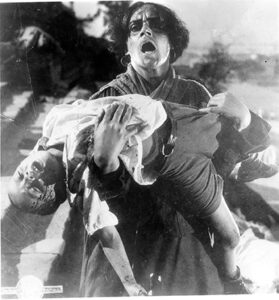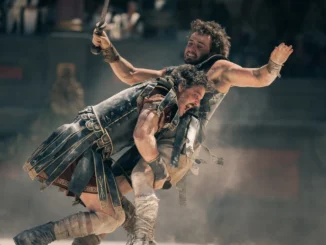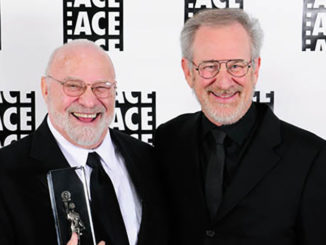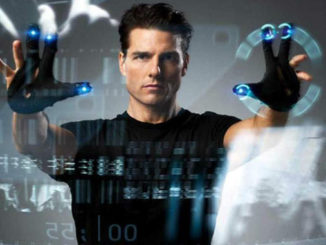
by Kevin Lewis
The Battleship Potemkin, or Potemkin as it is generally known, galvanized filmmakers around the world because of the audacity of its film editing––especially in the iconic Odessa Steps massacre. Its impact on editors and directors since its premiere in Moscow on Christmas Eve, 1925 is immeasurable.
Though Sergei M. Eisenstein transformed the possibilities of film language and technique far beyond previous expectations, he generously gave credit to American film director D.W. Griffith and English novelist Charles Dickens, both of whom had previously expanded the palettes of cinema and the novel, respectively.
In the twilight of his own troubled career as a director in the Stalinist Soviet Union, Eisenstein wrote a series of essays, which were collected and translated by Jay Leyda in Film Sense. His essay “Griffith, Dickens and the Film of Today,” written in 1944, delineates the evolution of montage, which was associated with Griffith and Eisenstein, but derived from Dickens––specifically, the use of parallel action, close-ups and flashbacks. Parallel action was the basis for montage, stated Eisenstein, which Dickens used as a break in the actions of his characters to pursue another storyline occurring at the same time.Griffith also used this device, along with close-ups, to the dismay of his producers who thought it would confuse audiences.
Unlike Griffith and Dickens, Eisenstein—who was trained as an engineer— eschewed melodrama as a narrative device because he saw film as a social and political weapon. He deconstructed melodrama, relying on juxtaposition of dynamic images in discordant ways to shatter the anticipatory thought processes of the viewer.

The Odessa Steps sequence is unmatched in terror because the long shots of the hundreds of men, women and children fleeing pell-mell down the vast steps while being shot at by the advancing Czar’s firing squad are interspersed with close shots and full-screen close-ups of the individual tragedies. And what tragic moments: The grief-stricken mother holding her trampled child in her arms before the Czar’s officers, and being shot down; another dead mother whose falling body causes her baby in a carriage to roll down those stairs while hundreds are being picked off as they run; an old teacher whose eye is whipped out of her head by a Cossack. (Brian de Palma famously replicated this scene in the Chicago train station––complete with stairs and baby carriage––for his 1987 release, The Untouchables.)
For the film’s 85th anniversary, Kino has released Potemkin on Blu-ray, which startles the viewer with its clarity. Even more importantly, those who grew up with re-edited versions can experience for the first time a complete version and restoration by Enno Patalas and Anna Bohn––using prints from Goskinofilm, the British Film Institute, Bundesfilm Archive Berlin and the Munich Film Museum–– which restores dozens of shots censored for graphic violence as well as title cards deleted for revolutionary content (even in Soviet Russia, the original opening title cards with a Leon Trotsky message was eliminated when he was targeted by Joseph Stalin). The original 146 title cards by Eisenstein are restored in this version and reveal that the director did not rely solely on the power of his images to convey revolution because the titles pound home the Bolshevik/Communist message in sledgehammer-and-sickle fashion.
The very first title states that the individual is melded into the masses to make revolution succeed. Sailors on the battleship Potemkin discuss Marxism. Whether the four writers (including Gregory Alexandrov, Eisenstein’s collaborator) actually wrote the script, tailored by the Central Committee of the Communist Party of the Soviet Union, Potemkin does not need any titles to convey its message of chaos. The original score by Edmund Meisel was newly recorded by Deutsches Filmorchestra for the Blu-ray release. A documentary on the original production and current restoration is also included.
Potemkin, which was a progression from the Soviet newsreel Kino-Pravda (film- truth), probably had more impact on inter- national documentary than on commercial filmmaking. John Grierson, the leading force behind British documentary, and later Canadian nonfiction, called Potemkin “a glorified newsreel.”
During the Russian Civil War between the Red and White Armies (1917-23), film- makers Lev Kuleshov and Eduard Tisse (who became Eisenstein’s cinematographer), shot the news events for Kino-Pravda, which were then edited together by Dziga Vertov and projected from trains traveling across Russia to the various villages. The message of the Russian Revolution was spread in this way. Kuleshov trained Eisenstein, as well as V.I. Pudovkin, then in his mid-20s, in the principles of editing and direction. Both Pudovkin and Eisenstein wrote the textbooks on film editing still used today––the former’s Film Technique and Film Acting and the latter’s The Film Sense and Film Form.

With Potemkin, Eisenstein deliberately constructed a work of agitprop, which was so detailed and manipulative that audiences and even historians believed that the invented massacre of civilians by Czarist officers and Cossacks on the Odessa Steps actually happened. Once seen,the Odessa Steps sequence is so effective it becomes reality, which is what Eisenstein wanted. The Revolution wrote its own history.
“The opposite of truth in the cause of verisimilitude” was Eisenstein’s quote from Goethe, and the film, through fiction- al reportage, showed newsreel and documentary filmmakers how to shoot events using high and low camera angles, perspective shots and close-ups. Though the film was banned in Nazi Germany, Hitler’s Director of Propaganda, Joseph Goebbels, studied Potemkin intensely and Leni Riefenstahl used it as a template for Triumph of the Will (1935).
The film was conceived and shot quickly, from roughly September to November, after a summer of false starts. The Central Committee, impressed with Eisenstein’s first feature film, Strike (1924), commissioned a film to celebrate the 20th anniversary of the 1905 mutiny and demonstrations. Eisenstein wanted to make an epic (in the manner of Griffith’s Intolerance, 1916), which began with the uprising and ship’s mutiny in St. Petersburg, following Russia’s humiliating defeat in the Russo- Japanese War and the shootings of the demonstrating civilians by the Czar’s officers in front of the Winter Palace. The film would follow a series of events, culminating in the December 1905 crushing of the insurrection in Krasnaya Presnya, a work- ing-class section of Moscow.
But the Central Committee wanted a premiere in December 1925, so Eisenstein limited the film to the mutiny of the abused crew of the battleship and the massacre on the Odessa Steps. In his account of the premiere at the Bolshoi Theatre in Moscow from Immortal Memories: An Autobiography, Eisenstein confirmed how rushed the whole process was, with the final reel not yet spliced together––even in the projection booth— when the opening section of the film was being projected. “The sequence of the meeting of the squadron was made up of extremely short cuts,” he wrote. “To make sure they would not be lost or get mixed up, I stuck them together by licking them with my tongue, and gave the reel to the assistant to splice. Then I took a look at the first version. Tore it apart. Looked at the second. Tore and changed that one too.”
To Eisenstein’s horror, the assistant threaded the film onto the projector with- out cement-splicing the cuts. Miraculously, the film ran through the projector without sputtering into bits. The premiere was a success, and the rest was (rewritten) history.
Editor’s Note: The restored version of The Battleship Potemkin will screen at the Film Forum in New York in January 2011 and tour throughout the United States, including an engagement in Los Angeles.





